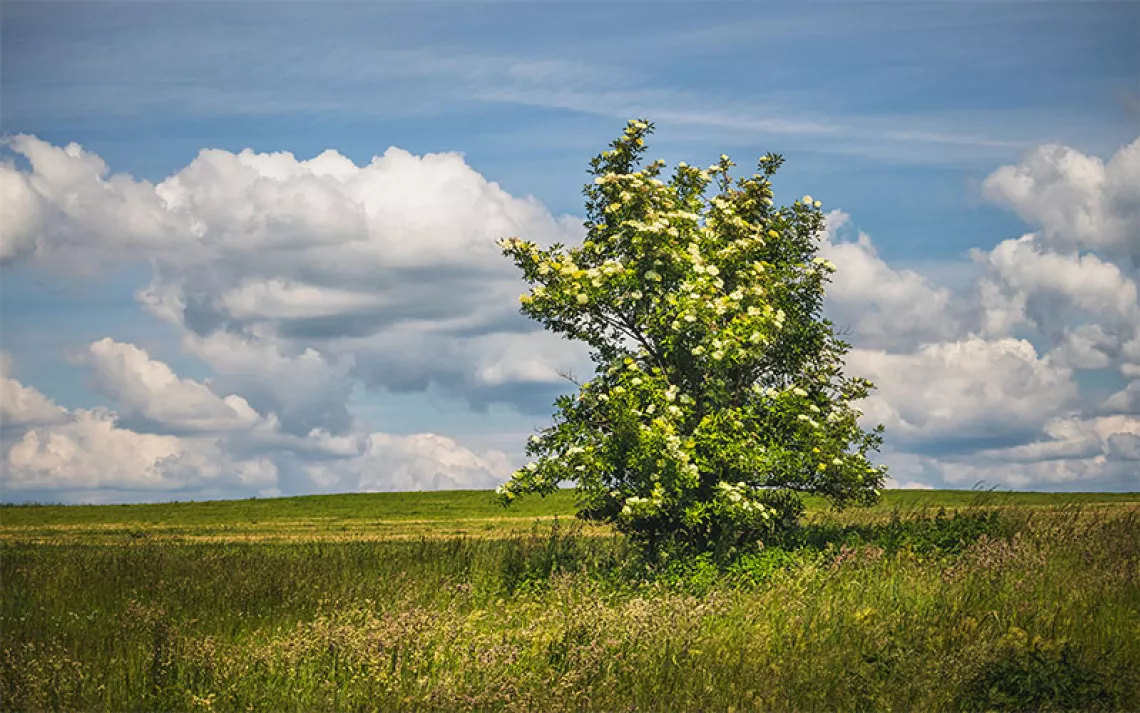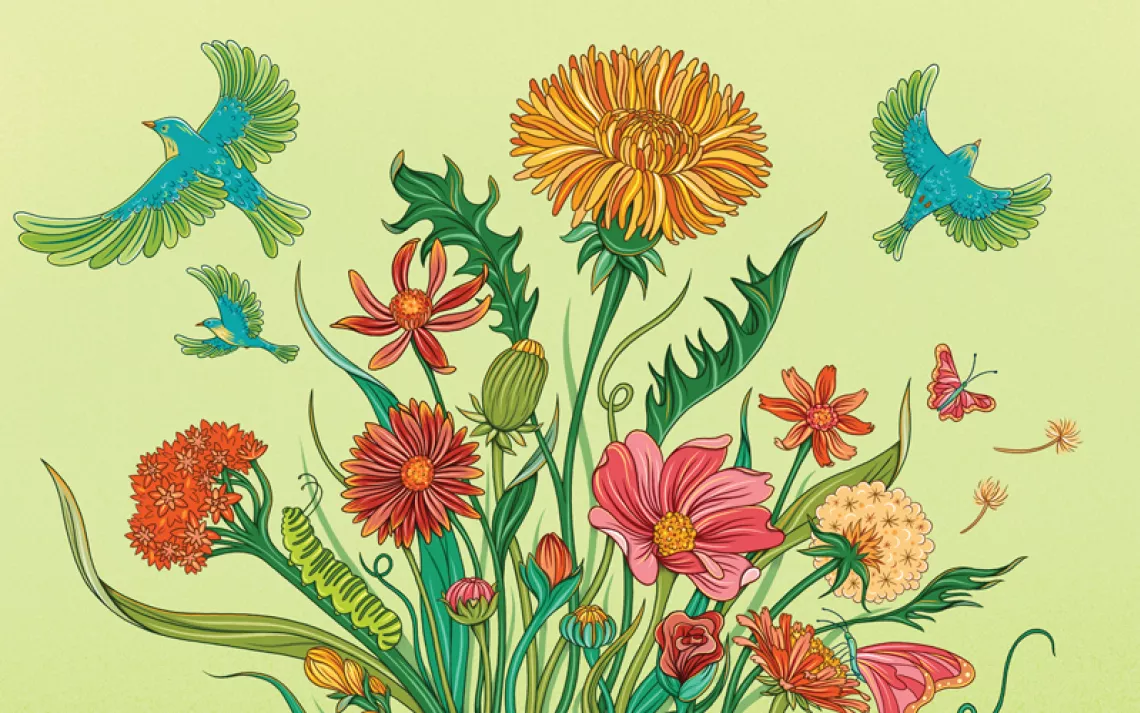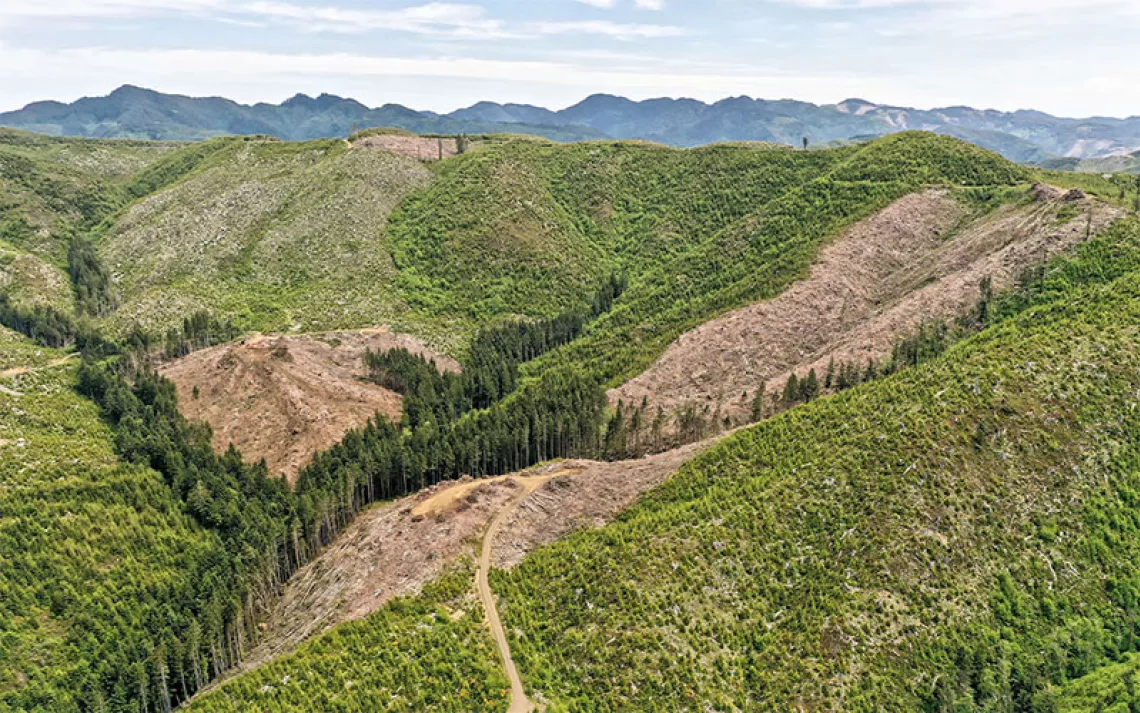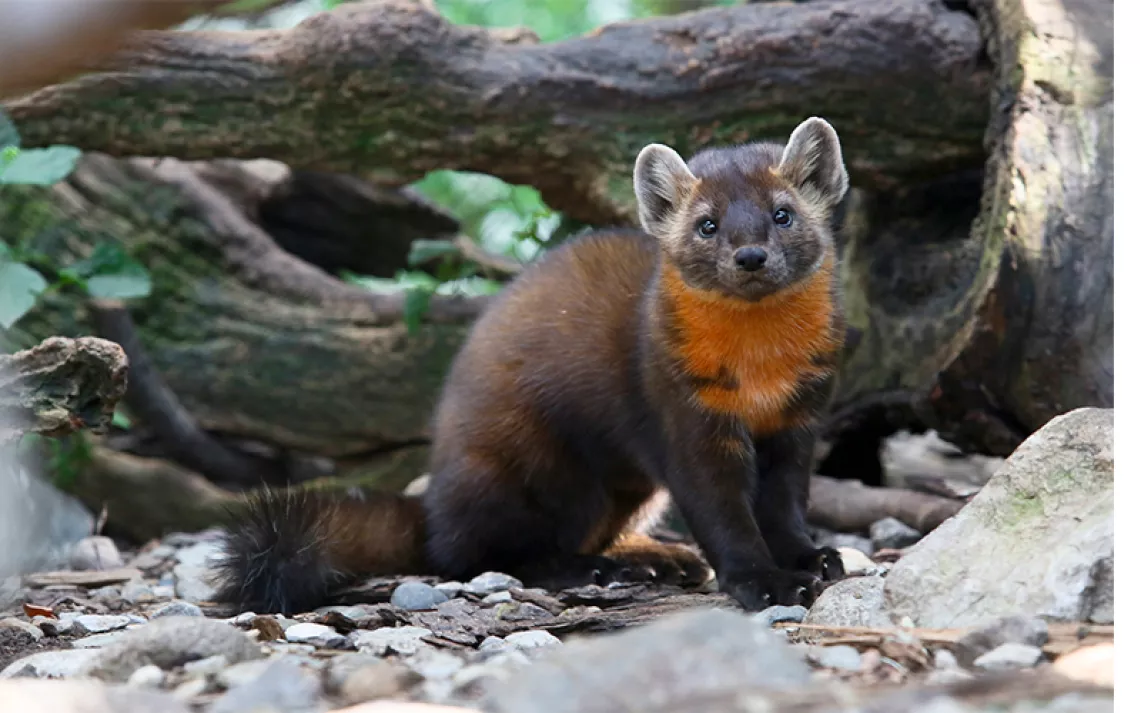A Year in 72 Seasons
The Japanese idea of "microseasons" may be a better way to mark time
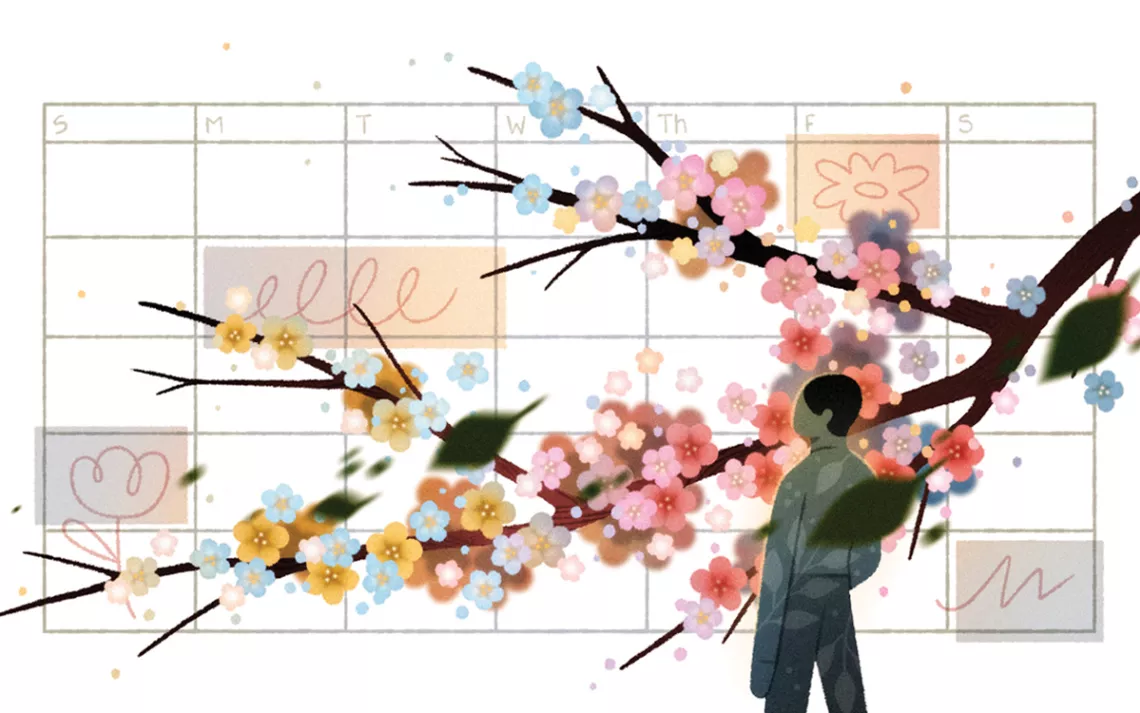
Illustration by Maggie Chiang
My parents taught me to recognize plants with our wild yard in Austin, Texas, as my textbook. In spring, the honeysuckle began to leaf out and slowly devour our mailbox. As the weeks passed, my parents donned winter coats and bicycle helmets each time they went to check the mail in order to withstand the dive-bombing from the mockingbirds that chose to nest there. Eventually, they installed a new mailbox and left our old one to the honeysuckle cloud.
After graduate school, I moved to Spain for a translation project. The scrublands in southern Spain looked like Texas, but the flora was unfamiliar, visual echoes in a foreign language I didn't fully speak. I married another writer, and we would climb up Serra Grossa, about a mile from our home in Alicante. We called it Tile Mountain because the earth was full of smashed house tiles. On one of our first hikes there, we found a sea of shrubs in bloom, branches covered in countless white and pink petals the size of pinkie nails, with the matte shine of expensive tissue paper. My attempts to find the name of the shrub, and when it bloomed, yielded nothing until a Spanish writer friend directed me to Herbario Virtual de Banyeres de Mariola y Alicante, a website put together by a local. It told me the shrub is called Salsola oppositifolia and it flowers from May to October.
In the days of Spain's strict pandemic lockdown, we were able to leave our home only once a week to visit our nearest grocery store and pharmacy. Our world shrank to two blocks. During that time, I read about Japan's 72 microseasons calendar, created in the 17th century and based on a much older Chinese system that marks time by noticing small changes in the landscape. I was first drawn to the week of my birthday (June 6–10, 蟷螂生, "praying mantises hatch") and the alchemy of the following week (June 11–15, 腐草為螢, "rotten grass becomes fireflies"). I felt I should learn to keep such time.
When restrictions eased, we were allowed to travel one kilometer from the house, which brought us almost to the edge of Tile Mountain. When restrictions eased further, we went to my husband's hometown of Burntisland, a Scottish village on the North Sea. There, the second wave of COVID grounded most travel and caught us.
A few weeks became four months. In January, my mother-in-law pointed out how the snowdrops were out too early. They usually signaled spring. That year there was an uncharacteristic snowstorm in early February, and the town was transformed for over a week into snowscape.
My phone became a digital diary of Burntisland's plant rhythms. March 20 showed daffodils poking up, and by March 28 there were carpets of them. I was mesmerized by all their varieties: daffodils that look like tiny thimbles, daffodils with extravagant ruffles, and trumpet daffodils perfect as plastic. By April 14, there was a tulip in the backyard, yellow as a ripe mango with soft stripes of green flowing up. The Japanese calendar said April 30–May 4, 牡丹華, "peonies bloom." On April 24, shortly before we finally returned to Alicante, I saw a peony, a tight burgundy fist slowly contemplating opening.
Now, when we return to Burntisland each winter, I see the landscape differently. I recognize the nubs that will be peonies, barely poking up through the dusty pink paving stones. I now know they were always there. I see them when I arrive in December, and I know when they will bloom come May.
 The Magazine of The Sierra Club
The Magazine of The Sierra Club
